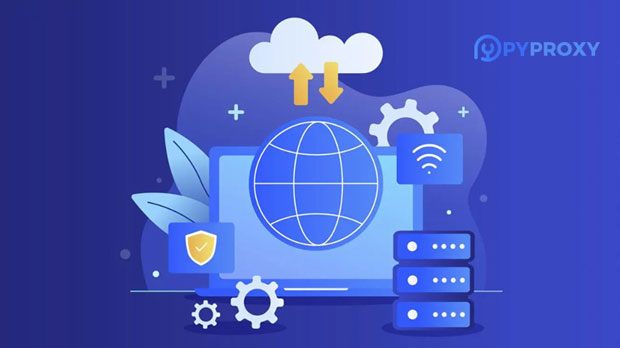In today’s digital world, proxies are an essential tool for individuals and businesses alike. Whether you're trying to maintain privacy, access region-restricted content, or ensure secure online communications, proxies can be used to route your internet traffic through intermediary servers. However, not all proxies are created equal. For Windows users, the choice of proxy can depend on specific needs such as security, speed, or scalability. This article will provide an in-depth comparison of different proxy types available for Windows users and analyze which one is most suitable for personal and business use, based on their respective features and benefits. What is a Proxy and Why Should You Use One?Before diving into the specifics, it’s important to understand what a proxy server is and why it’s useful. A proxy server acts as a middleman between a client (e.g., a computer or a smartphone) and the internet. When using a proxy, your internet requests are sent to the proxy server, which then forwards them to the final destination. The response from the destination server is sent back to the proxy server, which then forwards it to your device.Proxies are commonly used to enhance privacy, speed up internet browsing, bypass geographic restrictions, or protect sensitive data by masking the user’s original IP address. In business environments, they also help in managing network traffic and improving network security.Types of Proxies Available for Windows UsersThere are several different types of proxies available for Windows, each designed for different use cases. The primary types of proxies include:1. HTTP Proxy2. HTTPS Proxy3. SOCKS Proxy4. residential proxy5. Datacenter Proxy6. Transparent Proxy7. Reverse Proxy1. HTTP Proxy: Simplicity for Individual UseHTTP proxies are the most common type of proxy servers used by individuals. They are specifically designed for web traffic, and they only handle HTTP requests. When you access websites via an HTTP proxy, your browser sends HTTP requests through the proxy server, which then forwards them to the target website. The website’s response is sent back to the proxy, which in turn forwards it to your device.For individuals, HTTP proxies are relatively simple to configure and use. They are often sufficient for casual web browsing, unblocking websites, and hiding the user’s IP address for privacy reasons. However, they do have limitations—most notably, they are not secure for transmitting sensitive data, as they don’t support encryption.2. HTTPS Proxy: A More Secure Option for IndividualsAn HTTPS proxy is similar to an HTTP proxy but with an added layer of security. HTTPS proxies support the secure HTTPS protocol, which means the data transferred between your device and the server is encrypted. This makes HTTPS proxies ideal for protecting your data when browsing websites that require sensitive information, such as online banking or shopping sites.For personal use, an HTTPS proxy is a better choice than HTTP proxies, as it ensures your data remains encrypted and private, reducing the risk of interception by malicious third parties. However, it is still limited to handling web traffic and does not provide full security for all types of internet activities.3. SOCKS Proxy: More Flexibility for Personal and Business UseSOCKS proxies (Socket Secure proxies) are more flexible than HTTP and HTTPS proxies, as they support a wide range of internet protocols beyond just web browsing. SOCKS proxies can handle data from a variety of applications, such as email clients, instant messaging, file-sharing programs, and more. SOCKS proxies are ideal for individuals and businesses that need more versatility from their proxy solution. They can route traffic from almost any program that uses internet connectivity, making them more suitable for a wider range of tasks, such as gaming, file sharing, or accessing blocked content. Furthermore, sock s5 proxies (an advanced version) offer added features like authentication and better support for peer-to-peer applications, which are crucial for business use.4. Residential Proxy: High Anonymity for Business UseA residential proxy uses an IP address provided by an Internet Service Provider (ISP), rather than a data center. This gives it the appearance of a regular user browsing the internet from a specific location. residential proxies are often used for high-anonymity applications like web scraping, market research, or testing online ads.For businesses, residential proxies are highly effective when you need to access data from multiple geographic locations without getting blocked. They also provide a higher level of trustworthiness, as they mimic regular users, making it harder for websites to detect or block your activities.5. Datacenter Proxy: Speed and Scalability for Businesses datacenter proxies are IP addresses generated by data centers rather than ISPs. While they tend to be faster and more scalable than residential proxies, they may be easily identified by websites due to the data center’s unique IP patterns. As a result, datacenter proxies are commonly used for tasks where high speed and low cost are crucial, such as automated data scraping, SEO tools, or online gaming.For businesses that need bulk proxies for tasks like crawling or automating online processes, datacenter proxies are often the best choice. However, businesses should be aware that these proxies can sometimes be blocked or flagged by websites, especially if used aggressively.6. Transparent Proxy: Simple for Network ManagementTransparent proxies do not modify the client’s request or response. They simply act as intermediaries without providing any authentication or encryption. Transparent proxies are often used by businesses for network monitoring, content filtering, and caching. They can track internet usage, block certain sites, or speed up network performance by caching frequently accessed data.For enterprises, transparent proxies offer an easy and cost-effective way to control and monitor employee internet usage. However, because they do not offer encryption or hide users' IP addresses, they are not suitable for ensuring privacy or security.7. Reverse Proxy: Server Protection for BusinessesA reverse proxy is a server that sits in front of web servers and handles incoming requests on behalf of those servers. It’s primarily used to distribute traffic, load balance, and protect the backend server from direct exposure to the internet. Reverse proxies are commonly used by businesses for improving website performance, security, and scalability.For enterprises that host websites or web applications, reverse proxies offer significant advantages in terms of security (by hiding the origin server’s IP), load balancing, and traffic management.Which Proxy is Best for Personal and Business Use?For individuals, the best proxy solution depends on the primary goals. If you are looking for privacy and security while browsing, an HTTPS proxy or socks5 proxy is a good choice. These proxies provide encrypted connections, ensuring that your data remains secure while allowing access to a wider range of internet services.For businesses, the choice of proxy varies depending on the specific needs. If you need a high level of anonymity for scraping or market research, residential proxies are the best option. However, if you require speed, scalability, and cost-effectiveness for tasks like data crawling, datacenter proxies would be a better fit. Reverse proxies are ideal for businesses that want to secure their web servers, manage traffic, and improve performance.Choosing the right type of proxy for Windows users depends on specific use cases and requirements. Individuals looking for secure and private browsing should opt for HTTPS or SOCKS5 proxies, while businesses seeking scalability, anonymity, or traffic management can benefit from using residential, datacenter, or reverse proxies. Understanding the strengths and weaknesses of each type of proxy ensures that users can make an informed decision that aligns with their needs, whether for personal or business use.
Sep 09, 2025



































































